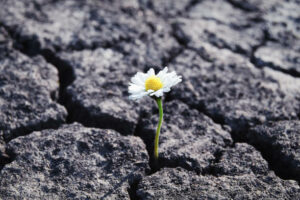
Steps to Building Resilience
“I can be changed by what happens to me. But I refuse to be reduced by it.”—Maya Angelou
Resilience refers to the ability of individuals to bounce back, recover, and adapt in the face of adversity, challenges, or significant stressors.
Resilience is the capacity to withstand and navigate through difficult circumstances, setbacks, or traumatic events while maintaining a sense of well-being and functioning effectively.
Resilience is not about being unaffected by difficulties but rather about recovering and thriving despite them; it involves developing psychological and emotional strength, flexibility, and adaptive coping strategies.
Resilient individuals can often maintain a positive outlook, effectively manage stress, and find ways to learn and grow from difficult experiences.
Are you resilient?
In this article, you will discover (1) what resilience means, (2) what resilience is not, (3) why you need resilience, and (4) steps you can take to build resilience if this is your desire.
What Does Resilience Mean?
“Resilience is the process and outcome of successfully adapting to a difficult or challenging life experience, especially through mental, emotional, and behavioral flexibility and adjustment to external and internal demands.”—American Psychological Association
Meet Susan:
Susan has spinal degenerative disease, diabetes, sleep apnea, and macular degeneration that has blinded her left eye.
Yet, she says: “I try not to feel discouraged for too long. I allow myself my ‘pity party.’
“But then I set my feelings aside and am thankful for what I am still able to do.”
Meet Roxana:
Roxana also has many ailments, including arthritis, breast cancer, and diabetes.
But, like Susan, she tries not to focus on her problems.
“I have learned to love people and to comfort others during their illness, which helps me as well,” she writes. “In fact, I find that when I am assisting others, I am not worrying about myself.”
Although both women are concerned about getting good medical care, they focus not on their physical health but on their attitude.
As a result, both Susan and Roxana have an inner peace that no one can take away from them.
Additionally, Susan and Roxana inspire people who are going through similar trials.
What Resilience Is Not
As noted earlier, resilience is not the absence of vulnerability or an inability to experience stress, adversity, or emotional pain.
Resilience involves acknowledging and understanding one’s vulnerabilities while developing the capacity to bounce from challenges.
Resilience is not a fixed trait or an inherent quality by only a select few individuals.
Resilience is not about always being strong, suppressing emotions, or projecting strength but recognizing and expressing feelings healthily, seeking support when needed, and adapting to changing circumstances.
Resilience is not a one-time achievement, a destination, or an endpoint but an ongoing process that requires continuous effort and adaptation. You learn from setbacks and adjust as needed.
And resilience is not the absence of struggle or failure.
Resilience does not guarantee a life without difficulties, setbacks, or failures.
A resilient person does not avoid challenges but develops the capacity to overcome them and grow stronger.
Why Do You Need Resilience?
Why, you ask, do you need resilience?
Resilience protects you because poor coping skills can create mental and emotional disorders.
Dr. Richard Lerner writes: “Part of being a successful and productive adult is to bounce back from life’s disappointing experiences, to set goals or to try to find other pathways to reach our intended objective.”
Five characteristics of resilience are:
- Problem-solving skills
- Strong social connections
- Survivor mentality
- Emotional regulation
- Self-compassion
(Source: www.verywellmind.com)
Resilient people believe they have control over their life.
Resilient people do not blame others for failures and problems.
And resilient people view challenges as learning opportunities.
So, how can you build resilience?
Steps to Build Resilience
Step One: Mindset
Mindset is everything.
Cultivate a positive mindset.
Develop a positive outlook by practicing gratitude, focusing on the silver lining in difficult situations, and reframing negative thoughts into more constructive ones.
Recognize that setbacks and failures are a part of life and provide opportunities for growth and learning.
An optimistic mindset can help you bounce back from difficulties.
Step Two: Get Connected
Build a strong support system.
Surround yourself with supportive and caring individuals and loved ones who can provide practical assistance, emotional support, and a sense of belonging, all of which contribute to resilience.
Sometimes the pain of a traumatic event can cause you to isolate yourself.
Wrong.
Accept help from friends and those who care about you.
Connect by volunteering or joining a spiritual community that can provide reassurance during challenging times.
Your group members can help you feel a sense of purpose and joy.
Step Three: Develop Problem-Solving Skills
Enhance your problem-solving ability by breaking them into smaller parts and considering various solutions.
Problem-solving skills will help you feel empowered and confident in finding solutions.
Identifying problems, setting goals, and developing problem-solving strategies enhance resilience.
Also, adapting and adjusting plans when faced with obstacles is crucial.
Try to make every day meaningful by setting clear, achievable goals, giving you a sense of accomplishment and purpose, and helping you look toward the future confidently.
Step Four: Practice Self-Care
Protecting your physical, emotional, and mental well-being is vital for resilience.
Self-care includes:
- Getting enough rest.
- Eating a balanced diet.
- Engaging in regular physical activity that brings you joy.
- Practicing stress management and relaxation techniques, like yoga.
- Seeking professional help when needed.
Ideas:
- Be patient.
- Cultivate gratitude.
- Choose contentment.
Step Five: Cultivate Flexibility and Adaptability
Life is full of unexpected changes and uncertainties.
Keep things in perspective.
Practice adapting to new situations, being open to change, and adjusting your plans when necessary.
Be willing to learn from failures and setbacks, which are important aspects of resilience.
Please don’t ignore your problems, but put them in perspective.
Be proactive.
Learn to distinguish between major problems and minor events.
When you have problems, figure out what you need to do, make a plan, and take action.
Learn from past mistakes.
And above all, maintain a hopeful outlook.
Summary
So, there you have it.
Being resilient doesn’t mean that you won’t experience difficulty or major adversity.
Resilience allows individuals to cope effectively, recover from setbacks, and thrive despite adversity.
Resilience is a dynamic process that can be developed and strengthened over time.
Like building muscle, increasing your resilience takes time and focus.
Following the steps recommended in this article will make you feel empowered to face difficult and traumatic experiences confidently.
Why not start today?
Follow the five steps above.
Build Your Resilience Now!
Key Takeaways
- What resilience means: The process and outcome of successfully adapting to challenges.
- What resilience is not: A fixed trait about always being strong, a one-time achievement, an absence of struggle or failure, a guarantee of a life free from difficulties, setbacks of failures.
- Why you need resilience: A protection because poor coping skills can create a host of mental and emotional disorders.
- Five steps to build resilience: (1) Cultivate a positive mindset; (2) Build a support system; (3) Develop problem-solving skills; (4) Practice self-care; (5) Cultivate flexibility and adaptability.
Building resilience takes time and practice.
It’s important to be patient with yourself and recognize that having moments of vulnerability is okay.
By implementing these five steps and being proactive in building resilience, you can develop the inner strength to face life’s challenges with greater confidence and adaptability.
Get started now!
I wish you great success!!




